Internet speed plays a crucial role in online learning, directly influencing the quality of content delivery and student engagement. A minimum speed of around 10 Mbps is recommended to ensure seamless access to educational resources and interactive sessions. Conversely, slow internet can lead to disruptions, affecting learners’ ability to participate effectively and causing frustration during critical assessments.
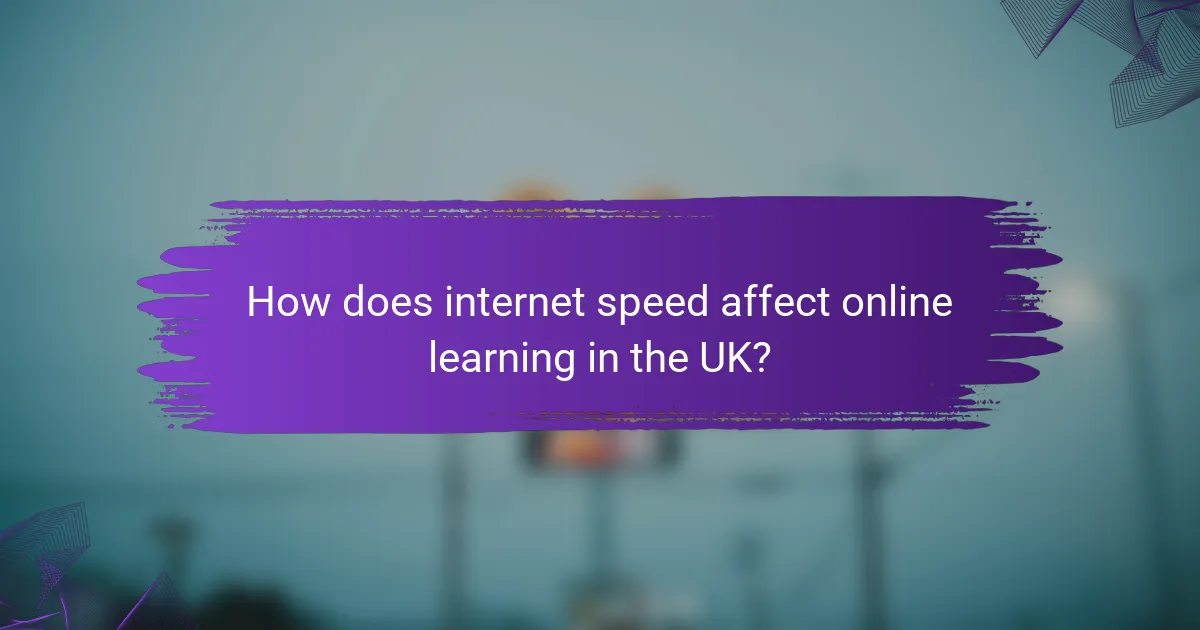
How does internet speed affect online learning in the UK?
Internet speed significantly impacts online learning in the UK by determining the quality of content delivery and interaction. Faster connections enhance the overall learning experience, while slower speeds can lead to disruptions and hinder educational engagement.
Impact on video streaming quality
Video streaming quality is crucial for online learning, as many courses utilize video lectures. A minimum download speed of around 5 Mbps is generally recommended for standard definition, while high definition may require 10 Mbps or more. Insufficient speed can result in buffering, pixelation, and interruptions, making it difficult for students to follow along.
To ensure a smooth experience, students should test their internet speed before classes and consider using wired connections when possible. If issues persist, reducing video quality settings can help maintain a consistent stream.
Influence on interactive learning tools
Interactive learning tools, such as virtual classrooms and collaborative platforms, rely on stable internet connections to function effectively. A speed of at least 3 Mbps is often necessary for basic interactions, while more complex tools may require higher speeds for seamless performance.
Students should be aware that lagging connections can disrupt activities like quizzes or group discussions. Using tools that allow offline access or downloading materials in advance can mitigate these issues during low-speed periods.
Effect on real-time communication
Real-time communication, including video calls and live chats, is essential for effective online learning. A stable connection with a minimum speed of 1.5 Mbps is typically needed for clear audio and video during discussions. Slower speeds can lead to delays and poor audio quality, which can frustrate both students and instructors.
To enhance real-time communication, students should close unnecessary applications that consume bandwidth and choose quieter times for online classes when the network may be less congested. This proactive approach can lead to a more productive learning environment.
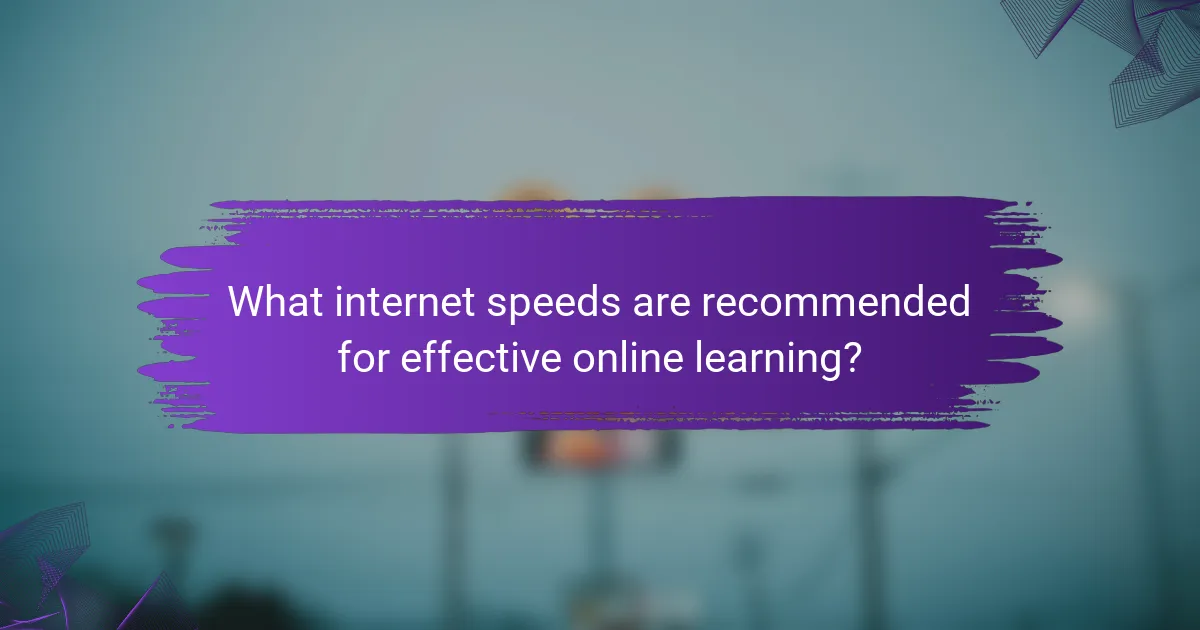
What internet speeds are recommended for effective online learning?
For effective online learning, a minimum internet speed of around 10 Mbps is generally recommended. This ensures smooth access to educational content, video lectures, and interactive sessions without interruptions.
Minimum speed requirements for video conferencing
For video conferencing, a minimum download speed of 1.5 Mbps and an upload speed of 1 Mbps is typically required for basic functionality. However, for a more stable experience, especially in group settings, speeds of 3 Mbps for download and 1.5 Mbps for upload are advisable.
Consider that factors such as the number of participants and the quality of video can affect these requirements. If multiple users are sharing the same connection, higher speeds will be necessary to maintain quality.
Optimal speeds for interactive platforms like Zoom
For platforms like Zoom, optimal speeds are around 3-5 Mbps for both download and upload to ensure high-quality video and audio. This allows for features like screen sharing and virtual backgrounds to function smoothly.
When engaging in interactive online learning, having a speed of at least 5 Mbps for download and 3 Mbps for upload can significantly enhance the experience. If possible, using a wired connection instead of Wi-Fi can further improve stability and reduce latency.
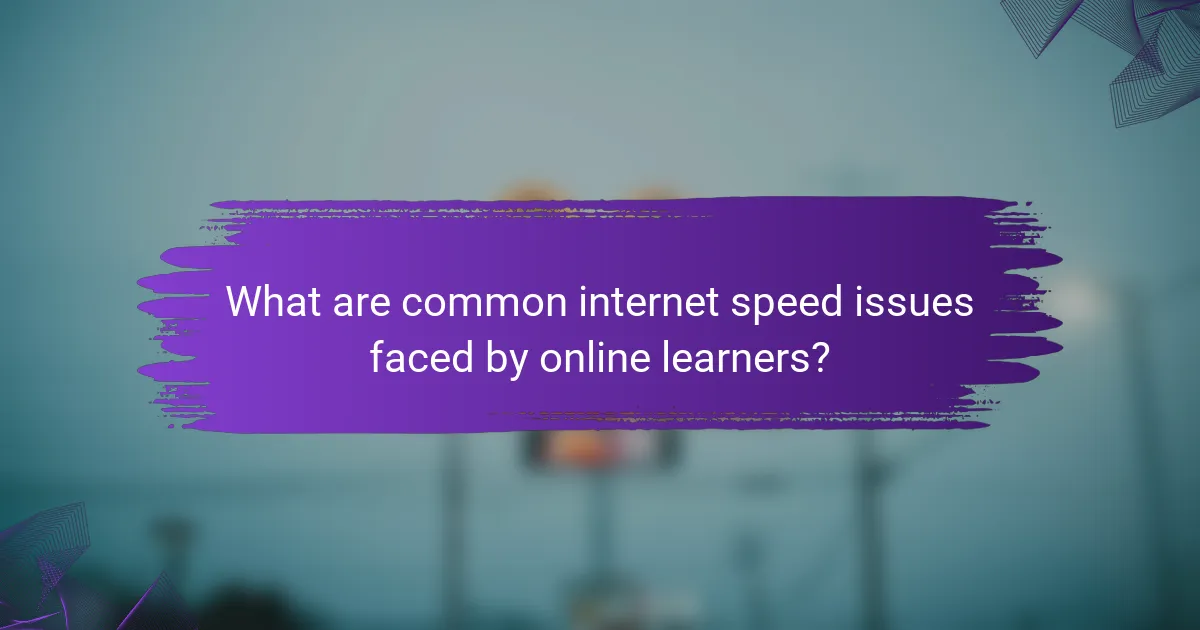
What are common internet speed issues faced by online learners?
Online learners often encounter issues such as slow download speeds, high latency, and frequent buffering, which can disrupt their educational experience. These problems can hinder access to course materials, affect participation in live sessions, and lead to frustration during assessments.
Buffering during video lectures
Buffering occurs when video content pauses to load due to insufficient internet speed. This can be particularly disruptive during live lectures or when watching recorded sessions, as it interrupts the flow of information and can lead to missed content.
To minimize buffering, learners should aim for a stable internet connection with a speed of at least 5 Mbps for standard video quality. For higher resolutions, such as HD, speeds of 10 Mbps or more are recommended. Using a wired connection instead of Wi-Fi can also help improve stability.
Latency in online quizzes and tests
Latency refers to the delay between a user’s action and the system’s response, which can be particularly problematic during timed quizzes and tests. High latency can result in lag, making it difficult for students to submit answers promptly.
For optimal performance, learners should strive for a latency of less than 50 milliseconds. If latency issues arise, closing unnecessary applications and ensuring no other devices are using bandwidth can help. Additionally, taking tests during off-peak hours may reduce network congestion and improve response times.
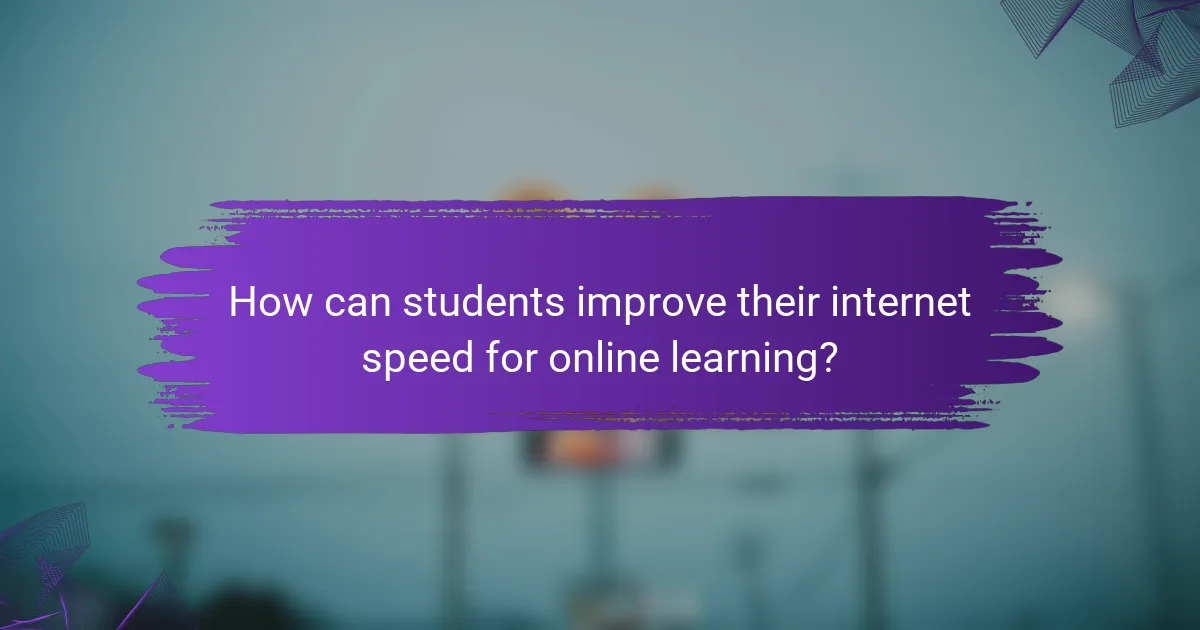
How can students improve their internet speed for online learning?
Students can enhance their internet speed for online learning by implementing several practical strategies. These include upgrading their broadband plans and opting for wired connections instead of relying solely on Wi-Fi.
Upgrading broadband plans
Upgrading to a higher-tier broadband plan can significantly boost internet speed, which is crucial for seamless online learning. Many providers offer various packages, typically ranging from 25 Mbps to over 1 Gbps, depending on the needs of the household.
When considering an upgrade, assess the number of devices connected and the types of online activities performed. For instance, streaming lectures or participating in video calls may require at least 50 Mbps for optimal performance. Always check for promotional offers or bundled services that can provide better value.
Using wired connections over Wi-Fi
Using a wired Ethernet connection instead of Wi-Fi can lead to more stable and faster internet speeds. Wired connections minimize interference and latency, making them ideal for online learning environments where reliability is essential.
To set up a wired connection, connect an Ethernet cable from your router directly to your device. This simple step can reduce lag and improve overall performance, especially during peak usage times when Wi-Fi networks may become congested.
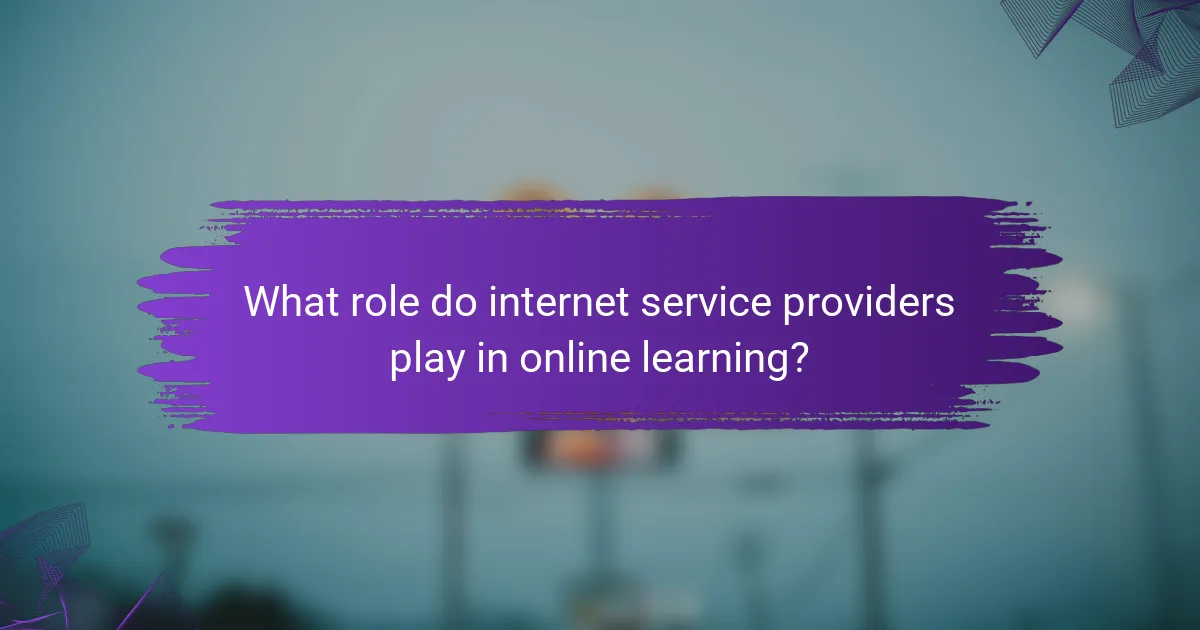
What role do internet service providers play in online learning?
Internet service providers (ISPs) are crucial for online learning as they deliver the bandwidth and connectivity necessary for students and educators to access digital resources. A reliable ISP ensures that users can engage in video conferencing, stream educational content, and download materials without interruptions.
Comparison of major UK ISPs
In the UK, several major ISPs offer varying levels of service that can impact online learning experiences. Providers like BT, Virgin Media, and Sky typically offer broadband speeds ranging from 30 Mbps to over 1 Gbps, depending on the package chosen. Students should consider both speed and reliability when selecting an ISP, as these factors directly affect their ability to participate in online classes.
For example, BT’s Full Fibre package provides high-speed connections ideal for multiple users, while Virgin Media’s cable service is known for its fast download speeds. Comparing these options can help users find a plan that meets their educational needs.
Impact of ISP throttling on learning
ISP throttling occurs when providers intentionally slow down internet speeds for certain types of traffic, which can severely hinder online learning. If an ISP throttles video streaming or online gaming, students may experience buffering during lectures or difficulty accessing interactive content.
To mitigate the effects of throttling, students should check their ISP’s policies and consider switching to a provider that offers more consistent speeds. It’s also beneficial to use wired connections when possible, as they tend to provide more stable performance compared to Wi-Fi.
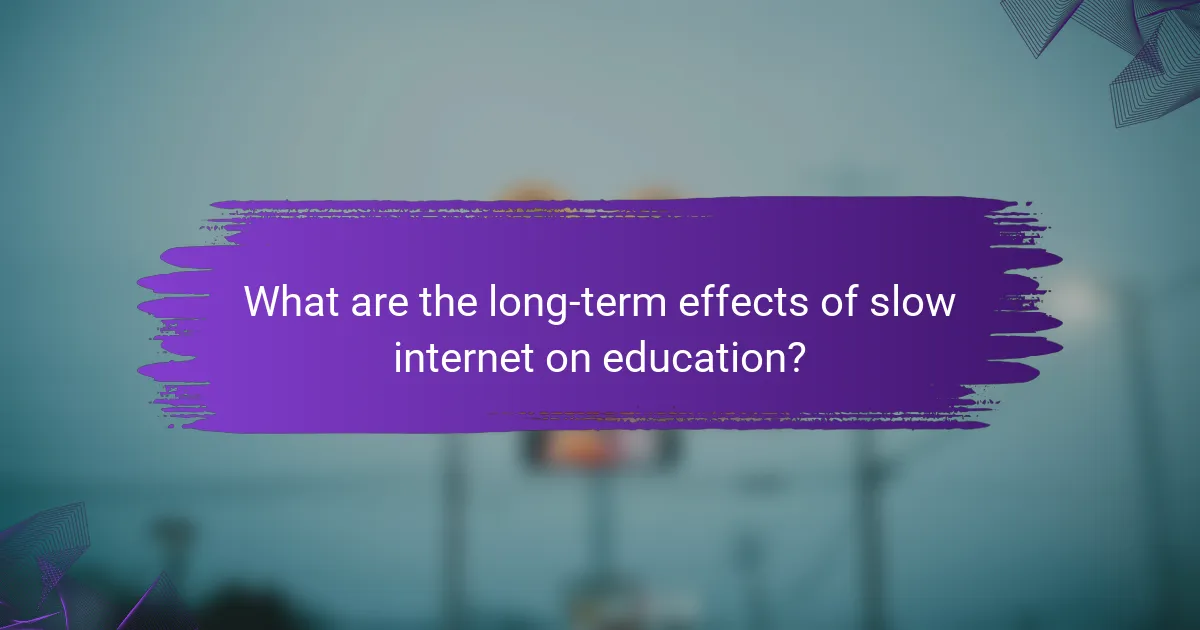
What are the long-term effects of slow internet on education?
Slow internet can significantly hinder educational experiences, leading to reduced access to resources and diminished learning outcomes. Over time, this can create disparities in knowledge acquisition and limit opportunities for students, particularly in remote or underserved areas.
Impact on student engagement
Slow internet connections can lead to frustration and disengagement among students. When video lectures buffer or online discussions lag, students may lose interest and participation drops. This disengagement can be particularly pronounced in younger learners who thrive on interactive and dynamic content.
To maintain engagement, educators should consider using lighter content formats, such as audio recordings or text-based materials, which require less bandwidth. Encouraging offline activities or providing downloadable resources can also help keep students involved despite connectivity issues.
Consequences for academic performance
Academic performance can suffer due to slow internet, as students may struggle to access essential learning materials or submit assignments on time. Delays in accessing educational platforms can lead to lower grades and increased stress, impacting overall motivation and self-esteem.
To mitigate these effects, students should develop time management skills and plan their study sessions around peak internet usage times. Schools can also provide alternative resources, such as printed materials or local study groups, to ensure that all students have the support they need to succeed academically.
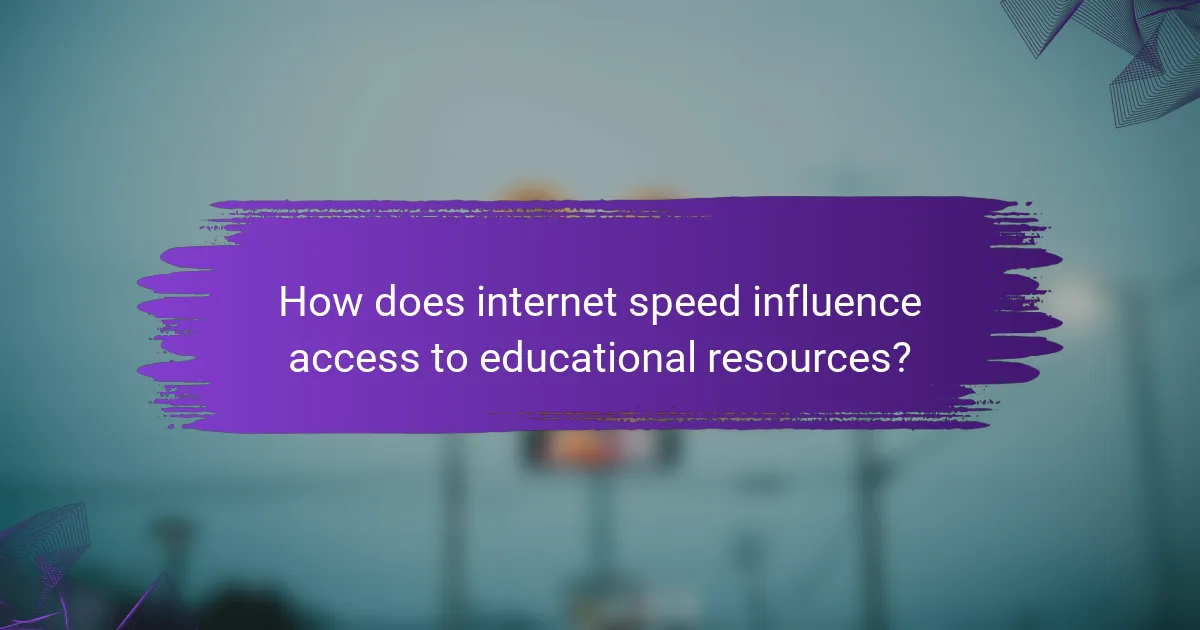
How does internet speed influence access to educational resources?
Internet speed significantly affects access to educational resources by determining how quickly students can retrieve and interact with online content. Faster connections facilitate smoother experiences, while slower speeds can hinder learning by causing delays and interruptions.
Effect on downloading educational materials
Downloading educational materials such as e-books, videos, and research papers is heavily reliant on internet speed. A connection speed of at least 25 Mbps is generally recommended for seamless downloads, allowing large files to be retrieved in a matter of minutes rather than hours.
Students with slower speeds may experience frustrating delays, which can disrupt study sessions. For instance, a file that takes a few seconds to download on a fast connection might take several minutes or longer on a slower one, impacting overall productivity.
Access to cloud-based learning platforms
Cloud-based learning platforms require stable and fast internet connections for optimal functionality. Platforms like Google Classroom or Microsoft Teams can lag or become unusable with speeds below 10 Mbps, making it challenging for students to participate in live sessions or access shared resources.
To ensure effective use of these platforms, students should aim for a minimum speed of 25 Mbps, especially during peak usage times. This helps avoid issues like buffering during video calls or slow loading times for assignments and materials, enhancing the overall learning experience.
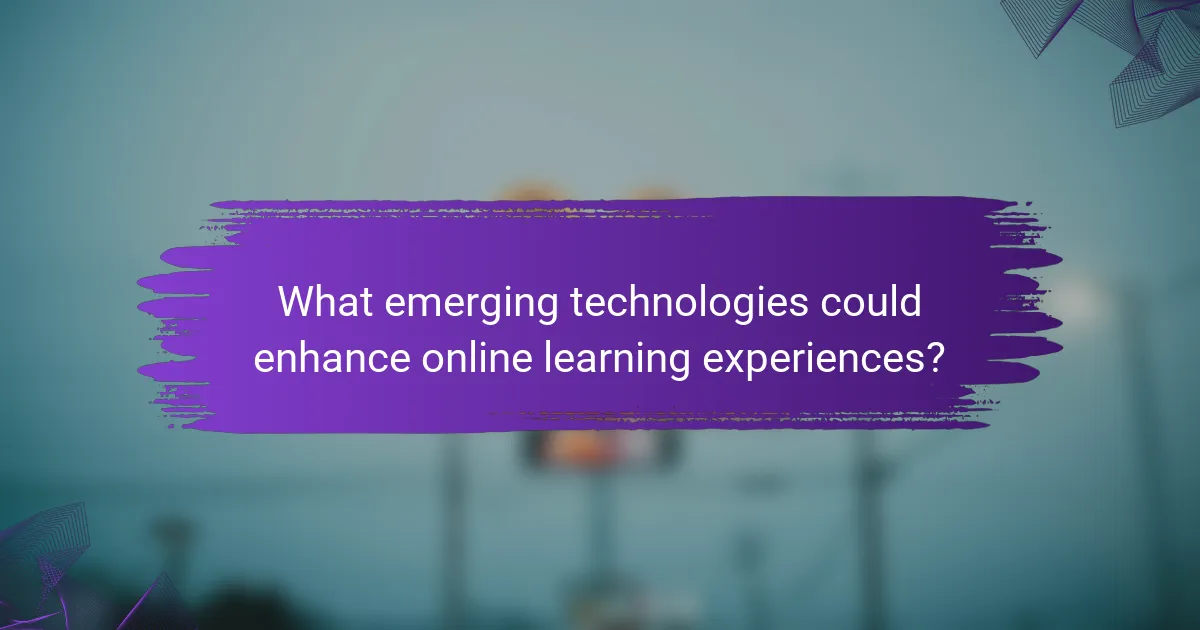
What emerging technologies could enhance online learning experiences?
Emerging technologies such as artificial intelligence, virtual reality, and adaptive learning platforms can significantly enhance online learning experiences. These innovations provide personalized, immersive, and interactive educational environments that cater to diverse learning styles and needs.
Artificial Intelligence in Online Learning
Artificial intelligence (AI) can tailor educational content to individual learners, making it more relevant and engaging. AI-driven platforms analyze student performance and preferences, adjusting lessons in real-time to optimize learning outcomes.
For instance, AI chatbots can provide instant support, answering questions and offering resources at any time. This immediate assistance can help students stay on track and reduce frustration during their studies.
Virtual Reality and Augmented Reality
Virtual reality (VR) and augmented reality (AR) create immersive learning experiences that traditional methods cannot match. With VR, students can explore complex environments, such as historical sites or scientific phenomena, enhancing understanding through experiential learning.
AR can overlay digital information onto the real world, allowing students to interact with 3D models and simulations. This technology is particularly effective in fields like medicine and engineering, where hands-on practice is crucial.
Adaptive Learning Technologies
Adaptive learning technologies adjust the difficulty and type of content based on a learner’s progress. These systems use algorithms to identify strengths and weaknesses, ensuring that students receive targeted support when needed.
For example, platforms like DreamBox Learning and Knewton provide personalized math and reading lessons that adapt in real-time. This approach can lead to improved retention and mastery of subjects, making learning more efficient.
